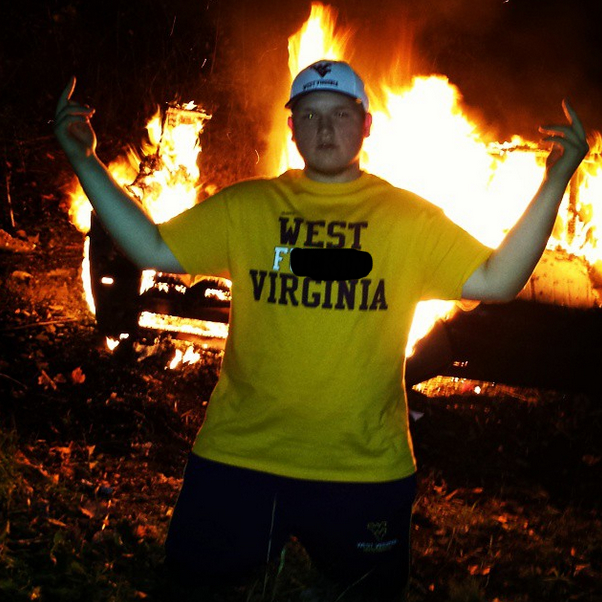
When the crowd grew unruly at Howard University’s homecoming during “Yardfest,” the annual hip-hop rite of passage, and several spectators were injured, there was a somewhat visceral reaction. The common theme was one of disappointment, exasperation by the seeming unruliness of [Black] crowds and the not-so-subtle suggestion that the scene exposed deeper issues on the campus of one of the nation’s most revered historically Black universities. This view was echoed by some African-Americans as well.
Turn back the calendar just several weeks ago and another unruly scene unfolded in proximity to a university. Following an off-campus party on October 12 at Western Washington University a boisterous and alcohol impaired crowd of 500 students descended upon the neighborhood and began to rip down traffic signs and throw beer bottles and cans at police. It took police almost an hour to restore control over the wild scene near the Bellingham, Washington campus. A joint statement released by university president Bruce Shepard and student body president Carly Roberts stated in part “This ‘riot’ in the community we are proud to call home has stunned us all, for it is so out of character.”
Is it really out of character?
It seems there have been numerous incidents of mob violence at colleges across the country and particularly at traditionally white institutions. The Black student population at Western Washington University is less than 2 percent. While the confusion at Howard University was driven primarily by anger of spectators unaware that a fee had been imposed for the previously free annual event, the violence at WWU was driven by alcohol induced frenzy. There was a similar occurrence in 1998 at Washington State University, according to news reports provoked by a ban on on-campus drinking. A crowd of 200 students started a melee that resulted in twenty three police officers sustaining injuries and 15 students getting hurt. It took 47 county officers, 18 state troopers, and 30 officers from nearby Idaho communities to quell the disturbance. Property damage was estimated at $15,000.
In 2001 angry students from Purdue University exchanged blows with police after the university lost the women’s college basketball championship against Notre Dame. At Penn State University in 1998 a weekend arts festival turned into a riot involving students and alumni as a reported 1500 people “rioted after bars closed, tearing down street lights, smashing storefronts, even stripping naked and burning their underwear” according to news accounts in the Seattle Times (July 13, 1998). In 2004 there was drunken mayhem at Iowa State University when several hundred students took to the streets as a party was breaking up in the wee hours of Sunday morning. The crowd proceeded to taunt police and throw bottles at officers resulting in more than 25 people being arrested.
Sometimes the violence exhibited by white students on college campuses is often found in other venues. In upscale Far Hills New Jersey at a prestigious equestrian Steeplechase match the event was marred by violence for several years. In 2012 the police arrested almost 30 people for underage urination, disorderly conduct and criminal mischief at the Far Hills Race Meeting.
The paucity of coverage either as a news item or opinion article, in the local press or national outlets, of these episodes in predominantly white settings versus the “sky is falling” rhetoric that accompanies Black students in somewhat similar mischievous, but less violent activity, is striking. Black students are typically characterized as disorderly and on the verge of some criminal act while white students are frequently given a pass by the media or at least their race is downplayed. When a university administrator simply describes a riot as “out of character” it lends credence to the idea that such criminal behavior could not possibly be representative of white students. Yet, society, with the manner in which race is often coded into news reporting, seems to fully embrace the negative characterization of African-American students that does not fit with the pattern of incidents that have occurred on college campuses across the nation through the years.
The differential treatment of unruliness of white versus Black college students by the media and the public further stacks the deck against young African-American women and men. While the incident at Yardfest might have resulted in some errant behavior, it was mild in comparison to the October 12 riot at Western Washington University and the many disturbances at predominantly white institutions in years past. The inference of criminality that is applied to Black youth is often fueled by the imagery projected in the media and popular culture, while similar attitudes are not expressed toward their white peers. Despite the many outbreaks of violence that have occurred on predominantly white campuses, there is hardly a suggestion that white-on-white crime is at a crisis level. Perhaps more troubling is the fact that many of the outbreaks of violence at predominantly white institutions is fueled by alcohol consumption that endangers the lives of students, neighborhood residents and police. The frequency of these types of outbreaks might one day warrant an academic study or legislative inquiry for those instances that occur on public college campuses.

today in black history
October 26, 2024
Edward W. Brooke, III, the first Black to serve in the U.S. Senate in the 20th century, is born in 1919 in Washington, D.C.
Quiet (White) Riots
POSTED: November 05, 2013, 12:30 pm





















